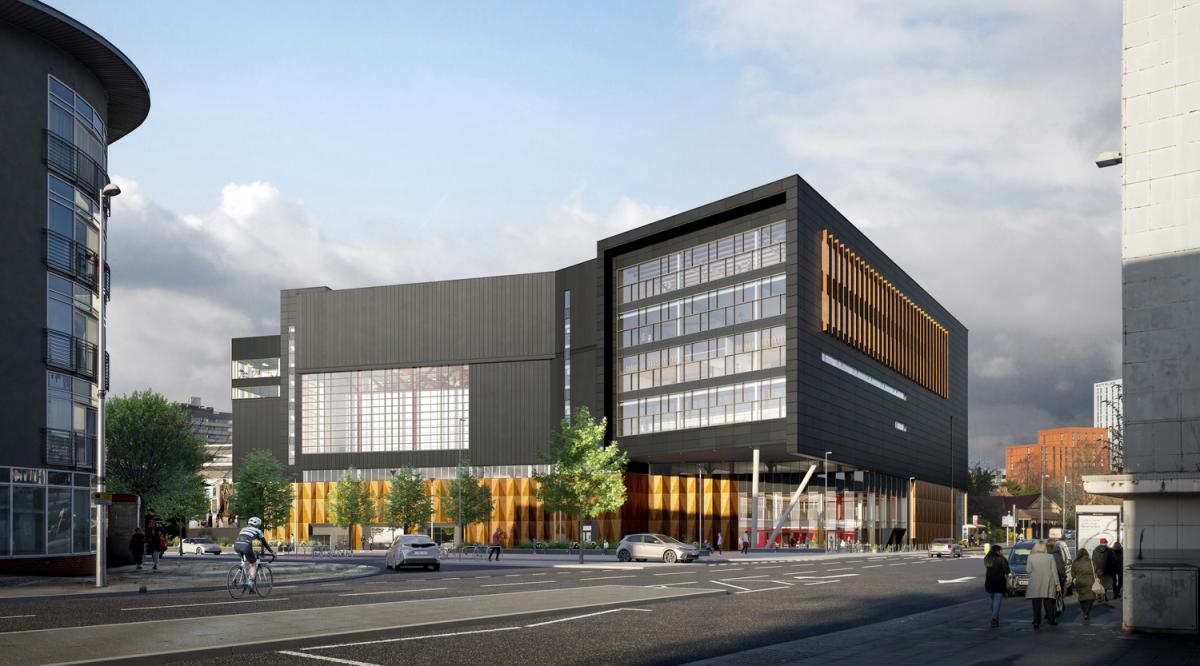With his time at Buttress coming to an end, we sat down with Will Rawling - our most recent PlanBEE apprentice as part of our commitment to the apprenticeship scheme.
We have supported the scheme for the past four years, providing placements and mentorship for apprentices entering the built environment sector.
Why did you choose an apprenticeship?
I actually started out by trying university first. I started a 3D design course at Manchester School of Art. I enjoyed the subject of the course, but I didn’t really respond to the academic side of things. It wasn’t the right fit for me and after leaving university, I worked at a recycling plant for a few years. The time away from education gave me space to think about what I wanted and I decided to have a career change.
I’ve always had an interest in the construction industry and engineering, so I focused my apprenticeship search on those sectors.
How did you become a PlanBEE apprentice?
I stumbled across the PlanBEE apprenticeship scheme while looking at other apprenticeships on the government website. What really stood out was that it wasn’t just focused on one career path. Instead, it offered a broad overview of the entire industry with six different placements over two years alongside college study – so you get a more holistic approach of a potential career path.
The application process was fairly easy. I submitted my CV and was encouraged to bring a portfolio to the interview. I brought a portfolio that was irrelevant to the construction industry – it was filled with photographs of my homemade jewellery and the processes behind them. I think that helped me stand out. It showed that I was creative and passionate about making things, even if it wasn’t necessarily construction-related.

What does a typical work week look at Buttress?
I’ve been assisting on two projects – The Limes and Coventry City Centre Cultural Gateway. At the start of the week, I tend to talk to the project team, and they give me actions for the week. I produce drawing packages throughout the week, and then towards the end of the week, I sit down with the team to do a ‘red pen exercise’, going through drawings, discussing changes and learning how they approach design decisions.
I’ve also been able to get out of the studio and onto site, accompanying either my team or others in the studio. I had the opportunity to carry out some condition surveys on Eliza Yard and Jersey Wharf. It’s really interesting getting to go on-site and see the actual buildings beyond the drawings.
In my last month, I’ll be helping out on the environmental side of Buttress’ B Corp reassessment.
I think a lot of my week is about being nosey – asking around about projects in the studio and sitting in on design reviews. From this, I get to be involved in a lot of conversations and meetings around other projects that I maybe wouldn’t have known much about otherwise
What has your favourite project been at Buttress?
It has to be the Limes, simply because I’ve been involved with it the most – and when you work on something so often, you do become quite attached to it.
That said, I had a really good task for the Coventry Collections Centre. I was tasked with researching the weight loads for vintage cars and spent hours on forums and reference sites trying to figure out what weight could be supported by different floor types. It was one of those unexpected but memorable tasks that taught me how much problem-solving is part of this job.

What have you learnt during your time at Buttress?
First of all, I have learnt what an architecture practice does. Before this placement, I had worked with project managers and engineers, but being inside an architecture studio showed me how all these disciplines connect and communicate. It’s a huge collaborative effort, and understanding these relationships is key.
I’ve really appreciated the need for broader knowledge. To do well in the construction industry, you need it. You need to have the knowledge and an interest in learning about other disciplines and practices too.
Where would you like to be in 5-10 years?
I’d like to be working for a big engineering company. I want to work in building services then eventually become chartered.
What advice do you have for anyone looking to start the PlanBEE scheme?
Keep an open mind. You can go into the scheme with an idea of the career you want but be willing to change your mind. And most importantly – turn up and be interested. And ask about everything.